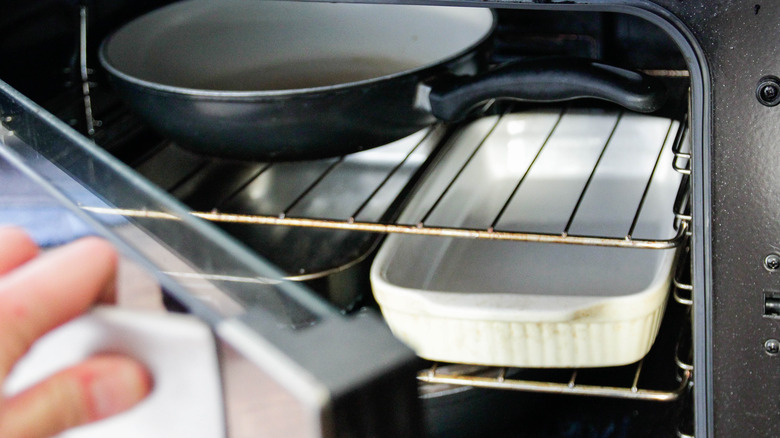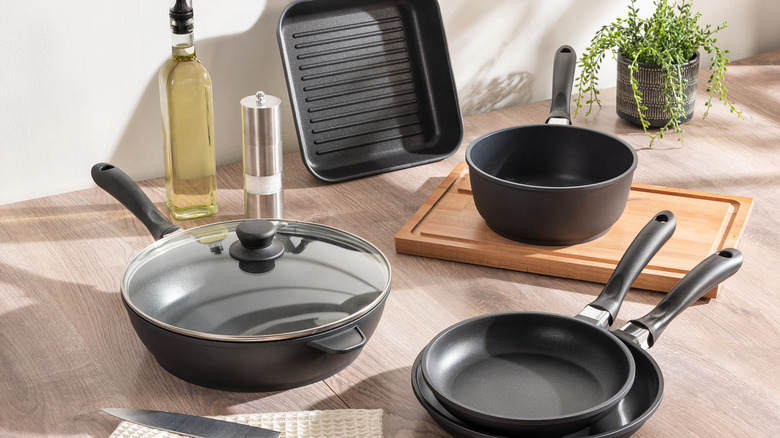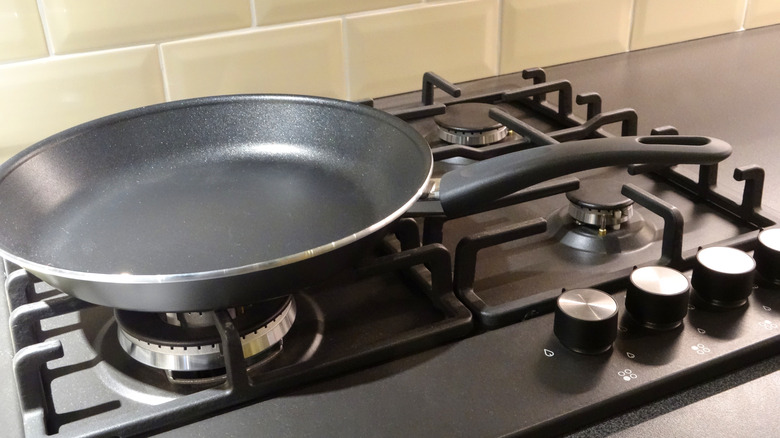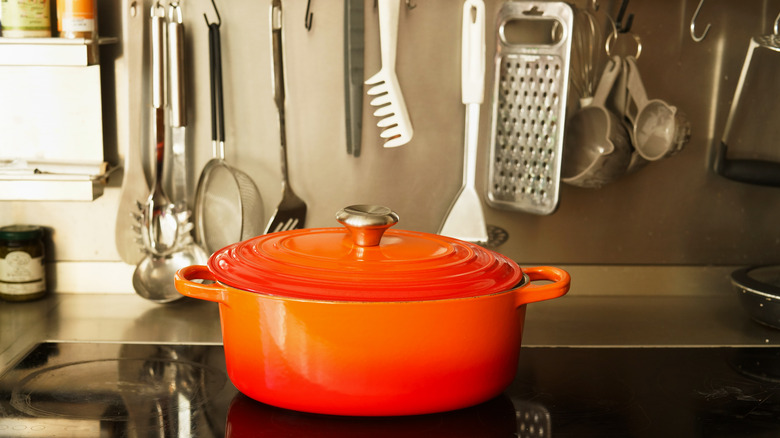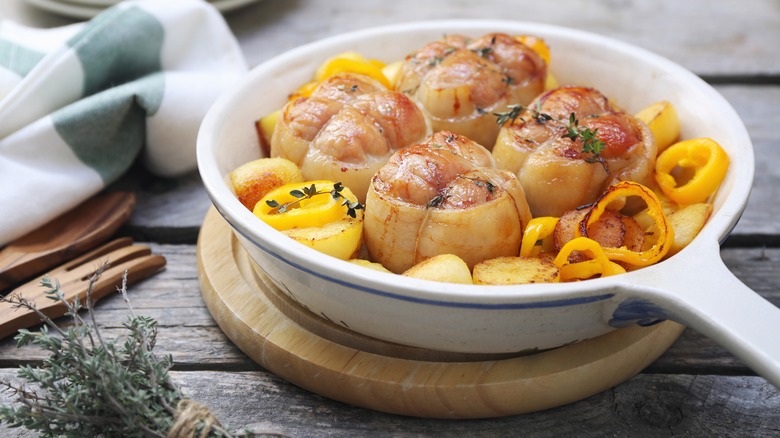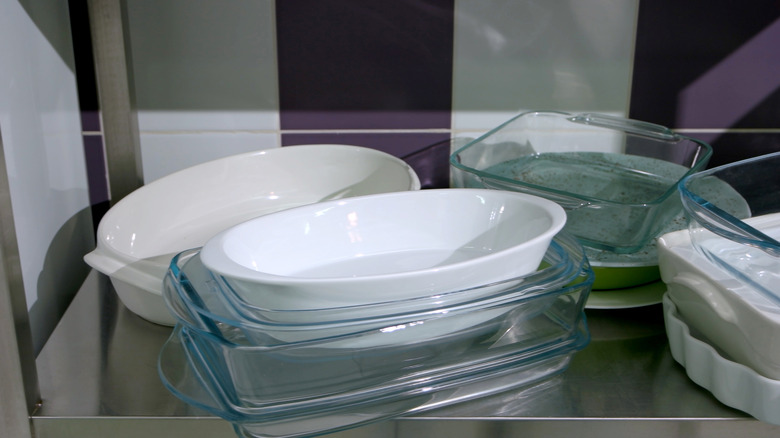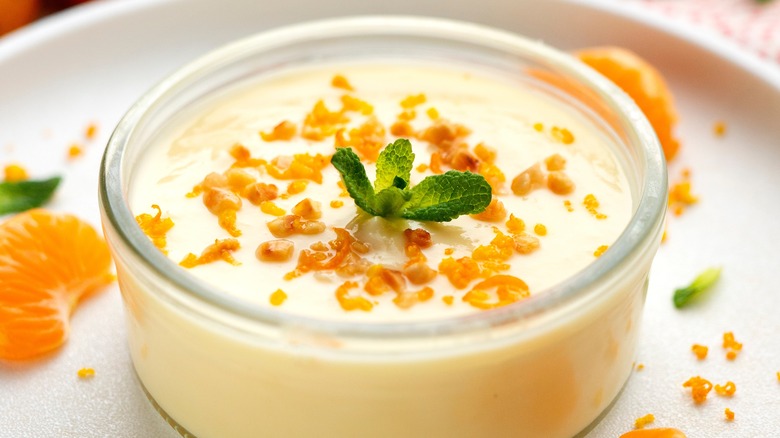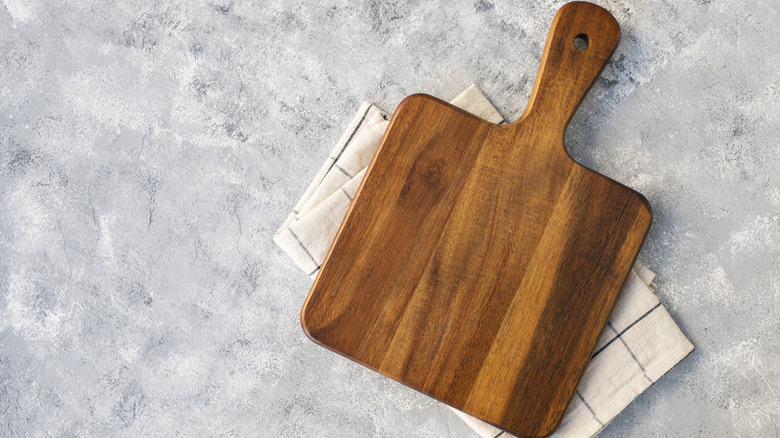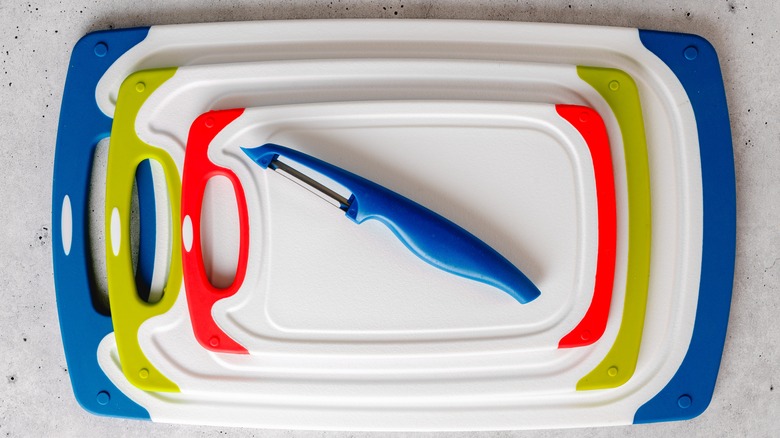Avoid A Kitchen Catastrophe By Keeping These Things Out Of Your Oven
We may receive a commission on purchases made from links.
Oven safety is important. If you want to prevent fires in your home or avoid ruining some of your kitchenware, it is essential to know how to use your appliance correctly. You might be in the habit of double checking if something is oven-safe before baking it, but do you do the same even when the range isn't turned on?
While it might be as big as a cabinet, it should not be seen as extra untapped storage. Storing certain things in it can lead to a kitchen catastrophe if you forget they're inside but preheat the unit. It's an important precaution you should take to prevent oven fires in your home. If you don't want to deal with a melty mess, ruined kitchenware, or even worse, a fire or explosion, read on to learn more about the items you should never store or leave in it.
Keep pots and pans with plastic knobs or handles out of the oven
Pots and pans take up a lot of storage space. When your kitchen is short on cabinet space, it can be tempting to use the space in the oven to store a few of them. Or, you might use it as an additional drying rack when cleaning up after a large meal. However, you do not want to put any pots or pans that have plastic knobs or handles in your oven. This is true even if the handles and knobs are described as "heat resistant."
"Heat resistance" does not equal safe for high temperatures. There is usually a temperature cap for these plastic knobs and handles, and it typically is only 300 to 350 degrees Fahrenheit. That means that if you forget the pots and pans are in your oven and preheat it to any temperature higher than 350 degrees Fahrenheit — say, for making a pizza — you could inadvertently melt or warp the handles. If left in the oven too long, the plastic could fully melt and make a huge mess that you'll need to clean up. Even worse, it could lead to a fire. Keep things safe and only put cookware in the oven when purposefully trying to cook something at a low temperature. (To check the specific temperature limits of your set, check your manufacturer's website.)
Avoid leaving nonstick pans in the oven
Pots and pans with plastic handles aren't the only type of cookware you should avoid storing in your oven. It is also essential to avoid storing pans with a nonstick coating inside. While many nonstick cookware sets are described as oven-safe, there is a temperature cap for their safe use. For most of these pots and pans, that temperature limit is 500 degrees Fahrenheit. If you preheat your oven to a high temperature to sear a roast or brown something under the broiler and forget that you have a nonstick pot or pan, you could risk causing damage to the cookware. Specifically, a temperature this high can interfere with the effectiveness of the nonstick coating or cause the color of the pan's surface to become discolored.
Even if you never cook at temperatures at or above 500 degrees, you still shouldn't store nonstick cookware in the oven. Even if you preheat your oven to a lower temperature, you're risking leaching forever chemicals. PFAS, or per- and polyfluorinated compounds, are chemicals that are commonly used to create nonstick coatings on cookware products. These "forever chemicals" can pose serious risks to the environment and your health, including the function of your hormones and thyroid, and increasing your risk of developing cancer. More PFAS chemicals are released when the cookware is exposed to higher temperatures, so limit your exposure by keeping your pots and pans out of the oven when you're not cooking on them.
Don't put cast iron or enamel cookware with plastic or silicone knobs in your oven
One of the benefits of cooking with cast iron and enamel cast iron cookware is their high heat tolerance. However, a common misconception is that you can store them in your oven without risk. This is not entirely true. Storing cast iron or enamel pieces with silicone or plastic handles in the oven, or forgetting to remove silicone handle holders before putting away the cookware, can lead to serious problems.
While most Dutch ovens and cast iron pans might handle temperatures upwards of 500 degrees, those with silicone elements are often recommended to be capped at about 350 degrees. Because of this, double check that your particular set doesn't have any silicone elements before storing it in the oven when not in use. If it does, it's best to find another spot. However, even if your set doesn't have silicone details, you still want to be diligent with your plastic accessories. For instance, silicone handles like the Lodge Handle Holder are not intended to be left in the oven. Most manufacturers specifically note that their products should be used to cover the handles after the pot or pan has been removed from the appliance. Failing to remove them before preheating could cause the silicone to melt, warp, or cause other problems.
It is not safe to leave ceramic dishes in the oven
Ceramic is typically an oven-safe material. However, that doesn't mean that you should start storing your ceramic bake- and serve-ware in the appliance. First, not all ceramic is safe to use in high temperatures, so if you inadvertently leave the dishes in your oven when it preheats, you could end up damaging the plate or its finish. This is particularly true for more decorative ceramic serving dishes, such as those with painted designs or embellishments, or ones that are unglazed.
Even if you have verified that your specific ceramic dishes are oven-safe — and even oven-safe to temperatures higher than you're likely to preheat your appliance to — it still isn't advisable to leave them in there. If there are any cracks in the plates or bowls — even hairline ones — it increases the risk of the ceramic item shattering from the expansion of these imperfections caused by the high oven temperatures. You don't need the added risk of storing these items in the oven. If you want to use ceramic dishes to heat up food in the oven, be sure to check them over first for any signs of damage.
Don't leave glass bakeware in the oven
Glass bakeware is specifically designed for use in the oven. So, leaving it inside should be no big deal, right? Unfortunately, this isn't true. Putting glass bakeware in the oven comes with a set of risks, and those risks are amplified when the dish gets preheated. This would be the case if you forget about your glass casserole dish as you turn your oven on to make another recipe.
When glass bakeware is put in the oven before it has finished preheating, it is more likely to crack. As the oven preheats, the heating element releases direct heat, which is more likely to crack the glass than the more even temperatures inside an already preheated oven. The risk of breaking is still there when baking in glassware, but you can minimize it by putting the dish on a room-temperature metal baking pan before it goes in the oven. This practice will help keep the more sensitive glass from getting shocked by the hot oven rack.
Keep untempered glass out of the oven
While some types of glass are oven-safe (after the appliance has finished preheating), other types should be kept out of the oven completely. Untempered glass is not oven-safe. You might think that the thick glass serving dish you have might be tempered, but if you don't know for sure, you can experience some dire consequences if you store it in the oven. It cannot withstand high temperatures and will likely shatter, creating both a huge mess to clean up and a safety hazard. It shatters at relatively low temperatures, too — just about 300 degrees Fahrenheit.
If you're not sure whether the glass serving dish you have is tempered or untempered, you can look for an oven-safe label on the underside of the vessel. If you don't see one, consider reaching out to the manufacturer. Without confirmation that the item is oven safe, venture on the side of caution and don't use it or store it in the appliance.
Wooden cutting boards may dry out if left in the oven
There are a few reasons you may think it is a good idea to put a wooden cutting board in the oven. You may have a robust collection but don't have a cabinet big enough to store the larger serving ones. Or maybe you need to temporarily clear off space on your counter to mix the ingredients for a new recipe. Whatever your reasoning may be, know that it is not a good idea to store a wooden cutting board in the oven.
When exposed to warmer temperatures or humidity levels, such as those that you'd find inside an oven, wood can warp, crack, or split along the lines where it was glued. If you forget about the cutting board and preheat your oven — or put it in the oven before it has finished cooling — you're running the risk of ruining your board. As tragic as that could be, there is something even more serious that can happen: it can catch on fire. Wood is flammable, and putting it inside an oven, particularly one that gets heated to a very high temperature, can have disastrous effects. Remember this advice and keep all wood — including wooden utensils and pots or pans with wooden handles — out of your appliance.
Plastic cutting boards and storage containers should not go in the oven
Plastic cutting boards and storage containers are other items that should be kept out of your oven. Plastic and the oven just don't mix. If you preheat the appliance with the board accidentally inside, at best the plastic will warp. It might even melt and leave you with a huge mess to clean up. (Can you imagine trying to remove the melted plastic from the oven when it's pooled on the bottom and spread across the rack?)
But that may not even be the worst that can happen. It could also ignite and start a fire, putting your safety at risk. Even if it doesn't cause an oven fire, you'll still have to deal with the horrendous smell of melted plastic and the potentially toxic fumes that are released during the melting process (petroleum is used when making plastic, after all). Save yourself the hassle and potential negative health and safety impacts by keeping your plastic cutting boards and containers out of the oven. As an added measure, there are also some items that you should avoid storing in the drawer under the oven.
